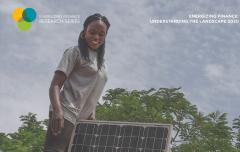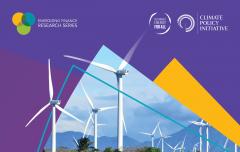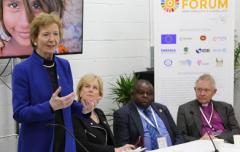Greater finance needed for gender-focused energy access initiatives
By Hannah Girardeau, SEforALL; Emira Woods, Shine Campaign; Morgan Richmond, CPI
"Put women and girls at the centre of efforts to recover from COVID-19."
These are the words of UN Secretary-General António Guterres from earlier this year, who also acknowledged that the pandemic has had compounding economic and social impacts on women. He has called for direct financial support to women-led businesses and integrated gender assessments of pandemic impacts on women in all countries.
Well before the outbreak of COVID-19, there has been wide recognition that a lack of energy access disproportionately affects women and girls in the form of health, productivity, caregiving, unpaid labour and employment burdens.
In this context, female-led energy access initiatives and those focused on providing women with sustainable energy are in urgent need of support. These initiatives offer the prospect of progress on Sustainable Development Goal 7 (SDG7) on energy and SDG5 on gender equality, while helping the world ‘Recover Better’ from the pandemic.
Unfortunately, current energy initiatives that have a gender-specific focus are not receiving adequate financial support. This was a major finding in Energizing Finance: Understanding the Landscape 2020, produced by Sustainable Energy for All (SEforALL) and Climate Policy Initiative (CPI).
The report, which tracks 2018 energy finance commitments in 20 high-impact countries with the largest energy access deficits, includes a special chapter dedicated to finance for gender-focused energy access. It finds that while finance for energy projects with a specific gender equality objective has increased over the last decade, it remains a small share (2-11 percent) of total official development assistance (ODA) to the energy sector. Finance for energy projects with a gender equality objective is also highly concentrated amongst a few donors — 93 percent of total finance reported is from only 10 government agencies.
Why is finance not being committed to gender-focused energy initiatives? A big reason is that donors do not have a clear roadmap for planning and reporting the concrete outcomes of investments in gender equity in energy access. This issue needs to be addressed so that promising initiatives get the finance they need, quickly and at scale, to help improve women’s livelihoods.
Therefore, Energizing Finance: Understanding the Landscape 2020 proposes a novel three-step methodology that project implementers can adopt to enhance the transparency and appeal of financing energy access projects with a gender equity objective:
Of course, the responsibility does not fall only on project implementers. It is critical that funders direct sufficient financial resources and human expertise to ensure project managers and other project personnel have the capacity to accurately report against gender equality markers.
An improved tracking methodology for gender equity impacts will undoubtedly provide a boost of confidence to a variety of granting organizations, but we cannot sit on our hands waiting for this methodology to develop when a global pandemic threatens to exacerbate gender inequalities. There needs to be immediate action from a wider mix of organizations to support gender-focused energy access initiatives.
Shine Campaign’s COVID-19 Recovery Fund is a strong example of the intentionality needed across the energy sector. The fund was co-created by a Council of Women Leaders in Energy Access convened by Shine.
The fund provides timely grants to meet the immediate needs of frontline energy access entrepreneurs, cooperatives, agencies and community leaders as they position the sector and their communities to survive the global pandemic.
It addresses women’s unequal access to finance and economic opportunities by financing women-led businesses or community organizations. This includes specific support for women-led micro or small businesses facing a dramatic loss of customers due to lockdowns and market closures or slow-downs as customers cut back on clean energy.
Initiatives like these not only help improve women’s access to energy in targeted communities, they also support female entrepreneurship and economic opportunities, improving gender equality outcomes on multiple fronts. The international community must do a better job recognizing these far-reaching benefits and dedicate greater finance accordingly. Project developers can do their part by clearly marking and reporting the potential gender impacts of energy projects to provide assurances to financiers.
By working together, these stakeholders can cement a gender-equitable energy transition and COVID-19 recovery — critical building blocks for an ecologically sustainable world where all members of the human family can thrive.
Read more about financing for gender-focused energy access.





